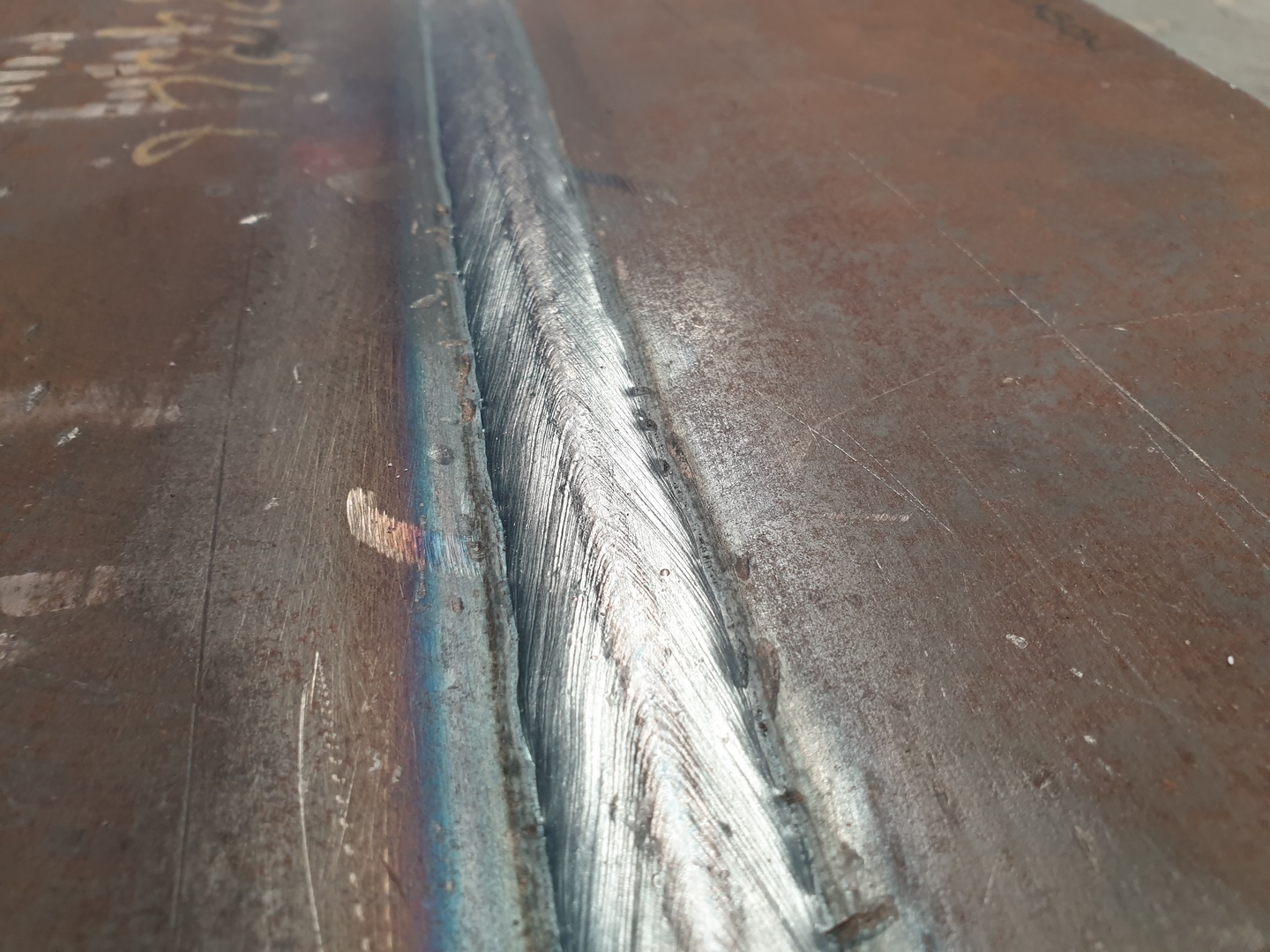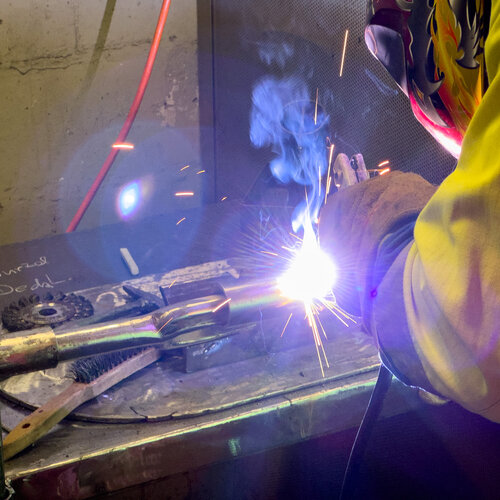The Ultimate Guide to Welding Inspection Racine for Industrial Criteria
Wiki Article
Cutting-edge Strategies to Fillet Weld Inspection and Screening: Enhancing Weld High Quality and Conformity Requirements
In the realm of welding, the top quality and stability of fillet welds play a crucial duty in making sure the structural sturdiness and dependability of various commercial elements. With the constant drive for boosted effectiveness and conformity with strict standards, the expedition of innovative techniques to fillet weld inspection and screening has ended up being important.Advanced Non-Destructive Screening Approaches
Making use of advanced technologies, advanced non-destructive screening approaches play an essential duty in guaranteeing the integrity and high quality of fillet welds. These techniques, such as phased selection ultrasonic testing (PAUT) and magnetic fragment testing (MPT), deal detailed insights right into the weld's internal structure without creating any damage to the material. PAUT, as an example, makes use of several ultrasonic components to inspect the weld from different angles, providing a detailed visualization of potential problems like absence of blend or splits.In A Similar Way, MPT is efficient in identifying surface-breaking problems by using an electromagnetic field and iron particles to the weld location. This approach is particularly helpful for determining discontinuities that may jeopardize the weld's toughness. By using these advanced non-destructive testing strategies, weld inspectors can accurately assess the quality of fillet welds, ensuring compliance with industry requirements and guidelines. The capacity to detect problems beforehand not just boosts weld high quality but also avoids expensive rework or failings in architectural stability, underlining the significance of these cutting-edge screening techniques in welding inspections.
Robotics and Automation in Assessment
The integration of robotics and automation has actually transformed the inspection procedure for fillet welds, enhancing performance and precision in quality assessment. Robotics supply exact control and repeatability in inspecting welds, making certain consistent and trusted results. Automated systems can be set to follow certain inspection courses, making certain complete protection of welds and reducing the risk of human mistake.Robotic examination systems furnished with innovative sensors can find and measure weld functions with high accuracy, providing in-depth data for evaluation. These systems can recognize defects such as fractures, absence of fusion, and porosity, allowing timely rehabilitative activities to be taken. In addition, robotics and automation permit real-time information collection and evaluation, giving immediate comments to drivers and promoting quick decision-making procedures.
In addition, the use of robotics and automation in fillet weld assessment boosts total performance by decreasing examination times and increasing inspection throughput. By improving the assessment procedure, manufacturers can make sure weld top quality and compliance standards are met effectively, eventually leading to cost savings and improved item top quality.
Utilizing Artificial Intelligence for Analysis
Synthetic knowledge plays a critical duty in improving the performance and precision of evaluation in fillet weld evaluation procedures. AI algorithms can swiftly process substantial amounts of information from weld evaluations, discovering defects or incongruities that might be challenging to recognize with the naked eye - Welding Inspection Racine.Moreover, AI systems can pick up from previous inspection data, consistently improving their capability to recognize possible defects and variances in fillet welds. This flexible learning capability improves the general high quality control procedure, decreasing the chance of human error and making certain that welds meet the called for standards. By integrating synthetic knowledge right into fillet weld evaluation, sectors can attain greater degrees of performance, consistency, and conformity in their examination techniques.
Portable Devices for On-Site Inspection
 Enhancing area evaluation efficiency, the fostering of mobile tools reinvents on-site analysis procedures for fillet welds. These devices use adaptability and benefit, permitting inspectors to carry out complete exams in numerous areas, consisting of remote or tough settings. Mobile devices such as ultrasonic testing gadgets, magnetic fragment inspection devices, and electronic radiography the original source systems provide real-time data and high-resolution imaging capabilities, enabling quick decision-making and immediate responses on weld top quality.
Enhancing area evaluation efficiency, the fostering of mobile tools reinvents on-site analysis procedures for fillet welds. These devices use adaptability and benefit, permitting inspectors to carry out complete exams in numerous areas, consisting of remote or tough settings. Mobile devices such as ultrasonic testing gadgets, magnetic fragment inspection devices, and electronic radiography the original source systems provide real-time data and high-resolution imaging capabilities, enabling quick decision-making and immediate responses on weld top quality.One substantial advantage of portable tools is their capability to enhance assessment procedures, decreasing downtime and enhancing total performance. Examiners can quickly transport these tools to different job websites, eliminating the need for transporting hefty machinery or components to off-site centers. Furthermore, the portability of these devices advertises cost-effectiveness by reducing transportation expenditures and speeding up inspection timelines.
read this post here
Moreover, the usage of portable devices for on-site assessment promotes aggressive high quality control actions, as examiners can quickly identify and address any possible welding issues or disparities. By integrating these cutting-edge innovations right into on-site evaluation techniques, welding experts can guarantee compliance with sector requirements and improve weld quality, inevitably causing boosted structural honesty and safety in different welding applications.
Assimilation of Data Monitoring Systems
Having maximized on-site inspection processes via the utilization of portable tools, the following stage involves the seamless assimilation of information administration systems to further boost efficiency and information analysis capacities in fillet weld assessment and screening. Welding Inspection Racine. By incorporating data management systems into the assessment procedure, companies can streamline information collection, storage space, and analysis. This assimilation enables real-time tracking of weld top quality, prompt identification of defects, and timely decision-making to correct any type of problems that might occur throughout the inspection process
The assimilation of data management systems allows smooth communication in between different stakeholders entailed in the evaluation procedure, fostering cooperation and enhancing general quality control measures. Ultimately, the assimilation of information management systems offers to boost the requirements of fillet weld inspection and screening, making sure compliance with market guidelines and enhancing weld high quality.
Verdict
To Resources conclude, ingenious strategies to fillet weld inspection and testing have actually significantly improved weld high quality and conformity criteria. Advanced non-destructive testing techniques, robotics, automation, man-made knowledge, mobile tools, and information administration systems have actually revolutionized the way weld evaluations are carried out. By making use of these modern technologies, industries can guarantee that welds satisfy the needed top quality criteria and laws, ultimately improving overall efficiency and safety in welding procedures.
By employing these innovative non-destructive screening methods, weld examiners can precisely examine the high quality of fillet welds, making sure compliance with industry standards and regulations. Mobile devices such as ultrasonic screening devices, magnetic particle inspection tools, and electronic radiography systems supply real-time data and high-resolution imaging capabilities, allowing fast decision-making and instant comments on weld quality.
Having actually maximized on-site inspection procedures via the use of portable devices, the following phase involves the smooth combination of data monitoring systems to additionally enhance effectiveness and information evaluation capacities in fillet weld examination and screening (Welding Inspection Racine). Ultimately, the assimilation of data monitoring systems serves to boost the requirements of fillet weld inspection and screening, guaranteeing compliance with market policies and improving weld high quality
 In conclusion, innovative methods to fillet weld assessment and testing have actually substantially enhanced weld high quality and conformity requirements.
In conclusion, innovative methods to fillet weld assessment and testing have actually substantially enhanced weld high quality and conformity requirements.Report this wiki page